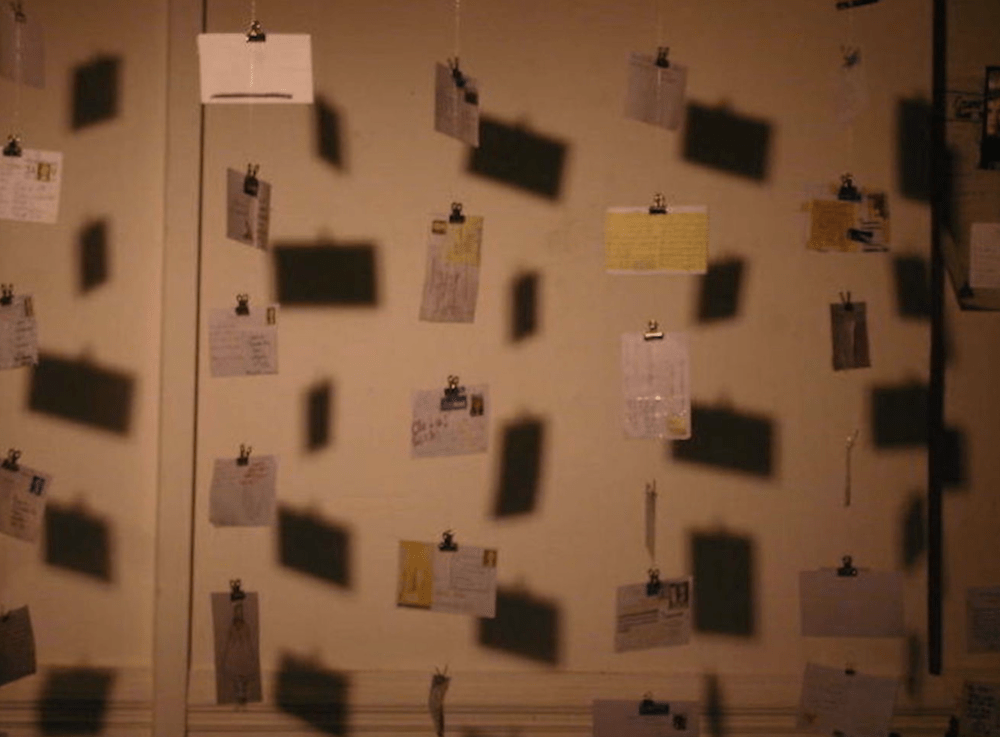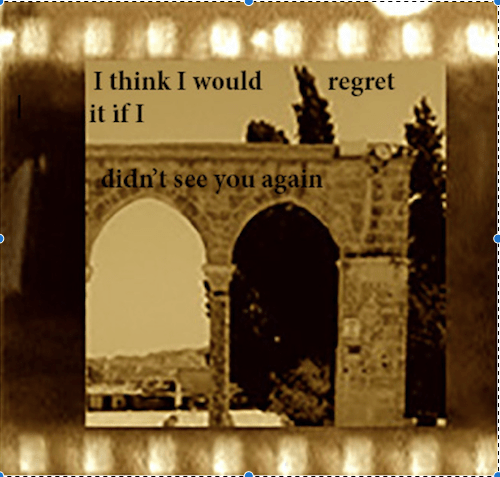Above Featured image: A postcard from Post-Authorshop– a collaboration with 100 people from across the world (No 7) from Diana Ali’s portfolio on Axis Web

Above: the image gives you some idea of the richness of the collaboration BBC’s Big Painting Challenge mentor Diana Ali developed with her trade mark light touch, humour and grace.
The BBC’s Big Painting Challenge hosted by Richard Coles and Mariella Frostrup is a programme that connects with the ideal of what the BBC was established to do. In the six weeks of the programme you watch amateur artists from every background, age and gender test themselves and their understanding of art and communication. They do their real best and are guided in real time, by mentors. Throughout the programme there’s an opportunity to participate in web gallery led workshops. I love this showing off and childlike quality in the desire to do your best because in that engagement you learn so much.
Someone who understands this better than most, is one of the mentors. Nottingham based Diana Ali, who comes from Rusholme in Manchester. Now an experienced teacher and curator, Diana did her degree at Nottingham Trent and MA at Sheffield Hallam. As one of two daughters of hard working Bengali parents, her work has evolved to challenge the boundaries of art: identity, memory, gender and the local and the global.
Like Rebecca Solnit, who cleverly writes about what it’s like to be an eight year old girl of Jewish catholic parents in a no man’s land between the adults and the five boys sitting at the passover table in the opening passage of her book ‘A Field Guide to Getting Lost’, where the adults thought Rebecca would be better off a little alienated on their table rather than to be completely alienated on the boys table. I could see straight away that in all her work Diana acutely recognises what it’s like to be a girl who is not a boy at the passover table. Women grow up often with a fragmented sense of identity.

Above: Aftermath– installation with jam where utopian and dystopian metaphors collide and an Alice like figure plays with the assumptions of story and storyteller
Like Monica Ali in her brilliant Point of View on Authenticity, (BBC radio 4 Sunday 17th September), who talks about a recent British Council trip to Russia guided by a Russian British Council employee who, in searching for personal truths accidentally engaged with Stalin as a hero, (and there’s a new film mocking this tendency), Monica Ali realises that because we’re so pressured by a system that sees only one elite type as real and authentic, everyone else is on a quest to prove that they’re real. But in her talk Monica Ali who’s writing a new book about a british princess’s struggle out of an arranged marriage to be free (mirroring her first book Brick Lane which was about a Bengali woman’s struggle out of an arranged marriage to be free) and has the insight to realise that we’re all just as the 19th century American poet Whitman says: no better nor worse than any other, we’re all small and large, we all contain the ‘blab of the pave’ we all contain multitudes….
Above artist Diana Ali at the table of correspondences in the Distant Dialogues- Correspondence project with strangers and on Twitter recently with Owen Jones, journalist, writer and commentator.
And that’s the currency of art that as an artist, curator and mentor she places, places and replaces so that she projects a sense of a homecoming and a travelling away at the same time: distance and familiarity, reaching out and reaching in: making visible the process of how we make art correspond with our lives. Diana is always travelling yet remains local, feet on a ground that you normally don’t notice. That’s what I find exciting.
She questions the moment we start to tell the story:
Diana Ali “I like to work with fictional narratives but who am I to tell someone else’s story?
My work is based on found footage: other people’s stories, ‘my’ stories and stories I want to live in.
As a contemporary visual artist, I feel like I have a duty to ‘spread the word’, help people become aware of situations, issues and topics affecting different stems of our lives, working with art students, business folk, different fragments of cultures and as a curator exposing other artists work.
At what point do I think about my own work? This is when I say, I don’t. My work is always, already there. It is in interacting with other people’s experiences, which, in turn, informs my own research around collaboration, recognition, narrative and relation.
My curatorial work poses questions where I am stuck with my own work.
Ethically, Is that stealing other artist’s ideas (by trying to find an answer) or is it simply expanding thoughts we are all thinking at the same time by sharing and exposing those ideas?
opencity (There’s an interesting article in this week’s Guardian magazine about plagiarism in poetry that really makes me think about the boundaries between me and you, us and them)
Diana Ali The verbal versus the visual? Can you have speech without words?
‘Yes of course we can’ would be the initial answer: as an artist, after all (is said) is the making of art picture making?
opencity (or is it the facilitation of many pictures in our hearts and minds as it reveals its own process? this, I think is what Diana Ali’s work does)
Diana Ali My work involves text, but text from other languages where to a foreigner it is merely a series of patterns. As Aristotle says: “There can be no words without pictures.”

Above Test Me: Animation Slides based on travelling experiences Diana Ali
Diana Ali: To me, art is a form of communication, a voice, a way to be heard without shouting in someone’s face. When I came back to this country, I didn’t know any English and at primary school, whilst other kids were doing their pretty paintings of rainbows and houses, I covered my paper in thick black paint with my hands. Looking back now, that was my frustration in not being able to communicate:
Black Paint
my voice.
Since then, I want to tell other people’s stories of their frustrations and celebrations in what can seem like an unknowing world.
Can you get away with it as an artist?
Yes: I practice and preach. We often say ‘I don’t have time to make work: well, make work about that then. It doesn’t sound hard.
opencity: again Diana brings out the paradox of meaning and language, how in the hardness in the challenge, ‘make work about that then’ can be a door, a welcome, a way in.
Diana Ali ‘What is hard is when you start to think of an outcome and the little ‘creative’ devil in your head starts to say, ‘it isn’t going to work’ or ‘no one is going to like it’, before you even put your medium onto a surface.
‘As artists we have the advantage of not following a system, conforming or not doing well because someone doesn’t like what you do. You will still have something to show (if you understand your own process), respecting yourself and others enough to communicate your thoughts out without having to justify them (to anyone!).
You can make commentary on politics, the state of the world, where you’re from and what you want to do no matter how ridiculous it sounds. Because with art isn’t it always subjective and and about making work….
opencity: making work work for others…we dream of the bigger picture because we live in smaller worlds often…
Diana Ali …we’re always expecting personal interpretations?
Yes and that’s fine but only you know the truth behind the work and who says you have to confess?
Above: Many aspects of a work in the life of artist Diana Ali: “Who am I to tell anyone’s story?”








Diana Ali can be seen on the next series of BBC’s Big Painting Challenge which is being filmed now in Glasgow to be shown early next year 2018;http://www.bbc.co.uk/programmes/b08fn9p2
LikeLike